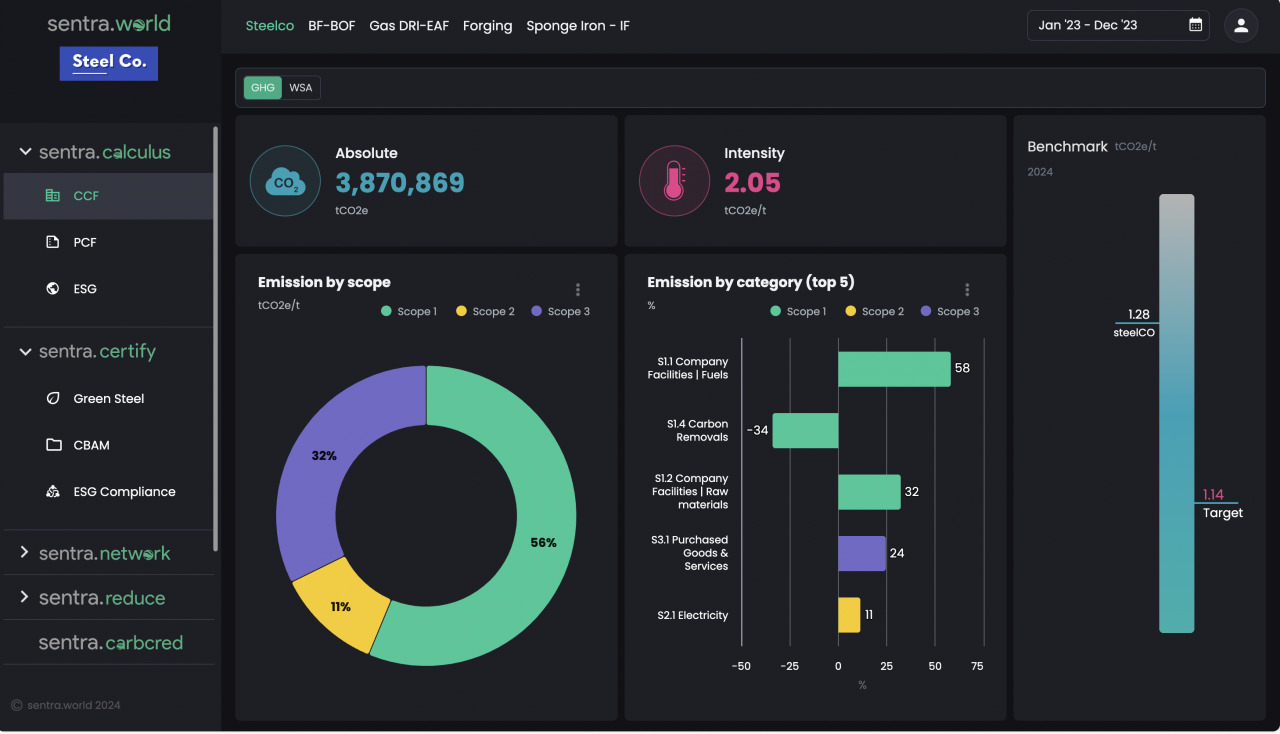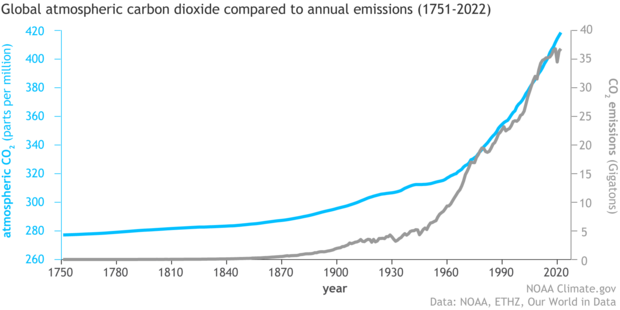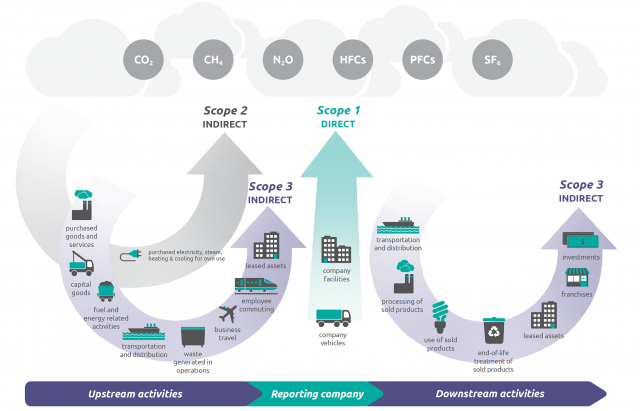In this blog, we will explore:
- Why Does Carbon Play a Crucial Role in Climate Change?
- How Does Climate Change Impact Businesses and Stakeholders?
- How Can Companies Calculate Their Carbon Footprint?
- Challenges in Measuring Carbon Footprint
- Conclusion
Why Does Carbon Play a Crucial Role in Climate Change?
Carbon dioxide (CO₂) and other greenhouse gases (GHGs) like methane and nitrous oxide play a pivotal role in trapping heat in Earth’s atmosphere, a phenomenon known as the greenhouse effect. While this effect is natural and essential for life on Earth, excessive carbon emissions from human activities have significantly intensified it. As per estimates, anthropogenic GHG emissions have been increasing at over 1% y-o-y with total emissions exceeding 37Gt CO2e in 2023. Atmospheric concentrations of CO2 have increased from 280ppm in the pre-industrial era to over 420ppm now. This creates significant risk in disrupting natural processes on earth increasing the need for efforts to mitigate CO2 emissions in order to slow down and hopefully stop earth warming.
Increasing CO2 emissions cause a vicious cycle of climate change:
The impact of rising CO₂ levels creates a domino effect, amplifying climate change through interconnected systems:
- Glacial Melting: Higher temperatures lead to accelerated melting of polar ice caps and glaciers, reducing the Earth’s albedo (reflectivity). This causes the planet to absorb more heat, further driving warming.
- Sea Level Rise: Melting glaciers and thermal expansion of seawater contribute to rising sea levels, threatening coastal communities and industries.
- Ocean Acidification: CO₂ dissolves in seawater to form carbonic acid, lowering ocean ph. This disrupts marine ecosystems, impacting fisheries and global food security.
- Extreme Weather Events: Warmer oceans and atmospheres fuel stronger hurricanes, prolonged droughts, and erratic weather patterns, affecting agriculture, infrastructure, and human livelihoods.
sentra.world has taken on the challenging mission of decarbonizing industrial manufacturing starting with steel which is one of the hard to abate sectors contributing anywhere between 8-10% of total GHG emissions.
How Does Climate Change Impact Businesses and Stakeholders?
- Direct Business Impacts
- Operational Risks: Extreme weather events, such as floods and heatwaves, disrupt supply chains, damage facilities, and halt production.
- Increased Costs: Regulatory measures like carbon taxes and emission trading schemes impose additional financial burdens. Energy and raw material prices can also rise due to resource scarcity.
- Stakeholder Perspectives
- Investors: Increasingly demand climate-resilient strategies, pushing businesses to adopt sustainable practices or risk losing capital.
- Customers: Prefer environmentally responsible companies, influencing market competitiveness.
- Employees: Expect their employers to address climate change, impacting talent retention and recruitment.
- Industry-Specific Challenges
- Compliance with Regulations: Industrial manufacturers must meet stringent environmental standards, like achieving net-zero emissions targets or adhering to frameworks such as the EU Emissions Trading System (ETS).
- Reputation Risks: High carbon footprints can tarnish a company’s image, affecting its brand value and customer loyalty.
How Can Companies Calculate Their Carbon Footprint?
Steps to Measure Carbon Footprint
- Define the organization boundary: This is of critical importance for companies with multiple subsidiaries, distributed manufacturing footprint and multiple supply chain interlinkages. It is critical to map out the business activities and align relevant stakeholders on the scope of the GHG assessment study upfront.
- Defining Scope: Classify emissions into 3 distinct scopes:
- Scope 1: Direct emissions from company-owned assets like machinery or vehicles.
- Scope 2: Indirect emissions from purchased heat or electricity.
- Collect Data: Use utility bills, production logs, and supplier information to gather energy consumption and emission-related data.
- Calculate Emissions: Leverage tools and standards such as:
- GHG Protocol: Offers a widely accepted framework.
- Carbon Footprint Calculators: Online tools or custom software solutions like sentra.world for comprehensive measurement.
- Report and Analyze: Use the data to identify emission hotspots and prioritize reduction strategies.
Challenges in Measuring Carbon Footprint
- Data Collection and Accuracy: Many companies, especially in industrial manufacturing, lack structured data collection systems. Variability in supplier data or incomplete records further complicates measurements.
- Complex Supply Chains: For Scope 3 emissions, tracing and quantifying carbon emissions across a multi-tier supply chain is particularly challenging.
- Standardization Issues: Inconsistent methodologies and lack of uniform reporting standards create confusion and hinder reliable comparisons.
- Resource Constraints: Small and medium-sized enterprises often lack the financial and technical resources to implement sophisticated measurement tools.
Conclusion
Understanding and managing carbon footprints is no longer optional—it is integral to a company’s survival and growth. For industrial manufacturers, addressing carbon emissions can lead to cost savings, enhanced reputation, and compliance with global standards. While challenges exist, leveraging technology, fostering transparency, and adopting robust frameworks can help businesses navigate the complexities of carbon management. At sentra.world, we help industries measure and mitigate carbon emissions. Below is a snapshot of our carbon footprint calculator platform, showcasing how you can calculate emissions and gain valuable insights.

By proactively addressing their carbon footprint, companies not only contribute to global climate goals but also secure a sustainable and resilient future for their business and stakeholders. Partnering with sentra.world will not just help companies get an accurate baseline view of their corporate carbon footprint but also facilitate effective charting out of decarbonization pathways.




